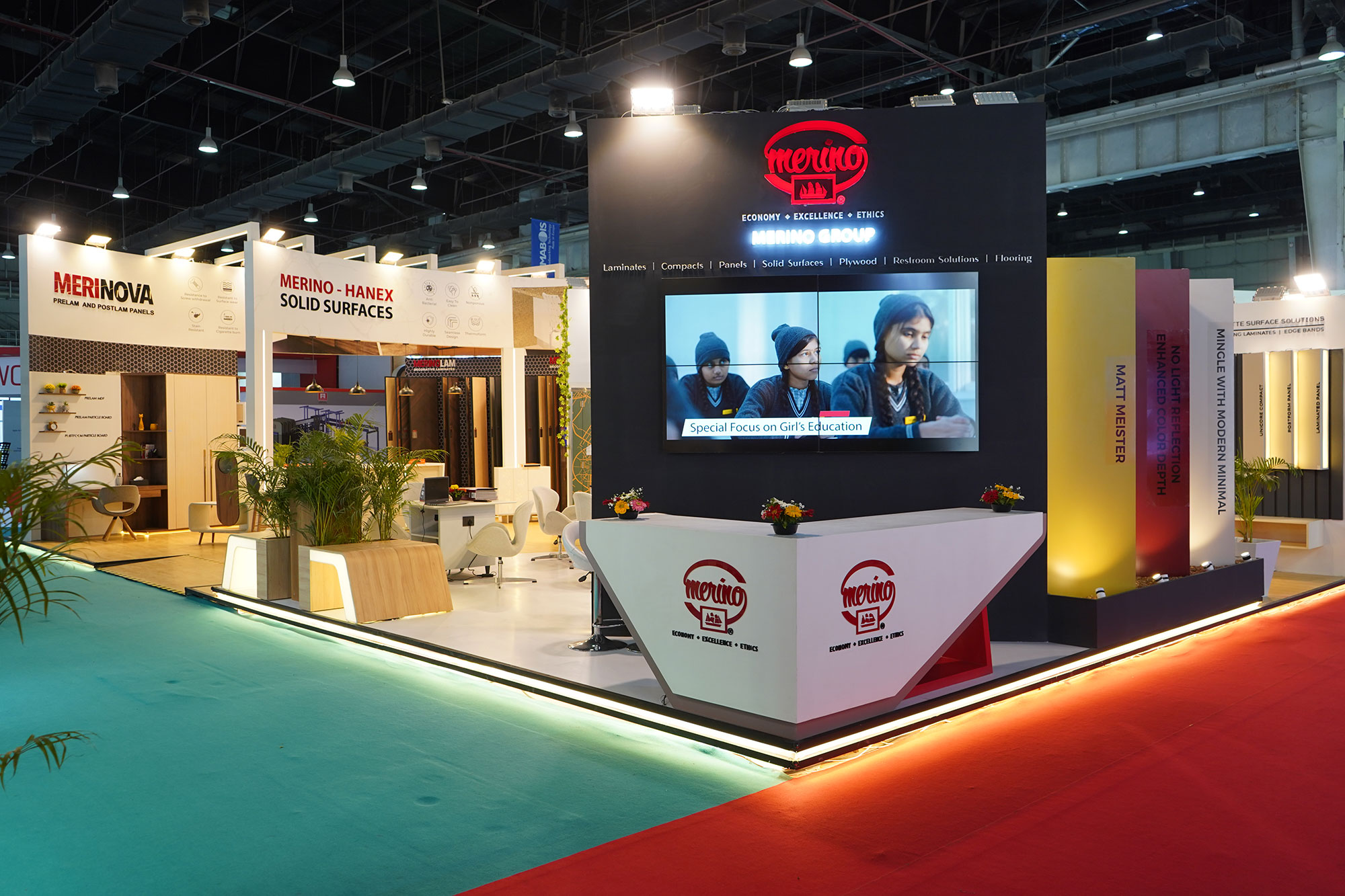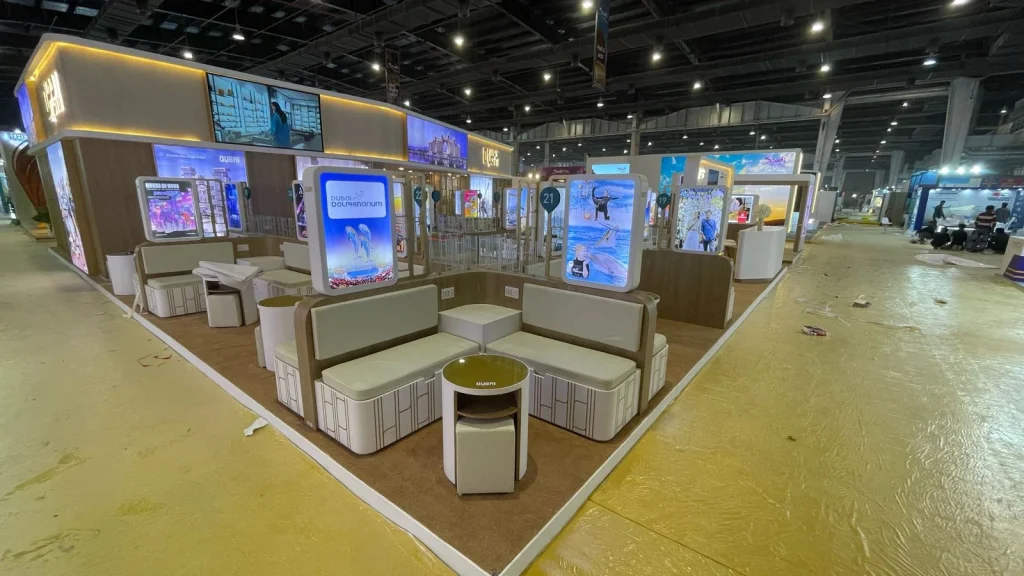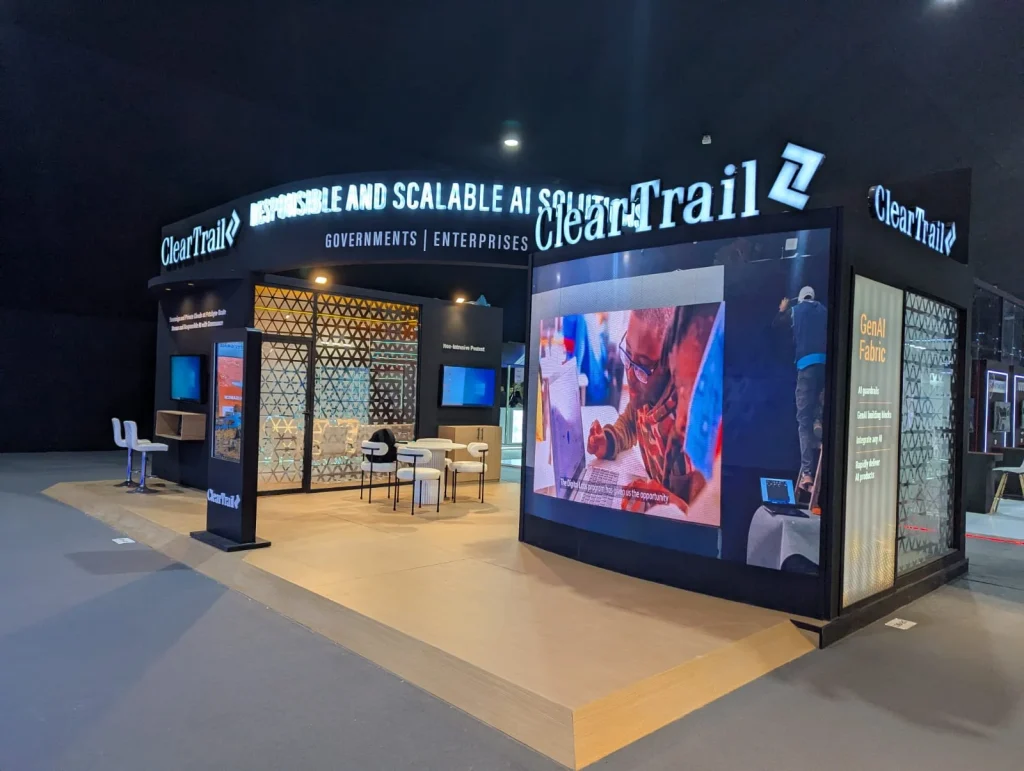
Introduction:
Temporary architecture, characterized by its ephemeral nature and adaptability, has become a pivotal element in exhibition stand design. This approach not only allows for innovative and dynamic spaces but also addresses the need for sustainability and cost-effectiveness in the fast-paced world of trade shows. This blog explores how temporary architecture influences exhibition stand design, the benefits it brings, and the key considerations for creating impactful temporary structures.
1. Understanding Temporary Architecture:
Definition and Characteristics: Temporary architecture refers to structures designed for short-term use. These designs emphasize flexibility, mobility, and rapid assembly and disassembly. Key characteristics include:
- Ephemeral Nature: Designed for specific events or periods, these structures are dismantled afterward.
- Modularity: Components are often modular, allowing for easy reconfiguration and reuse.
- Lightweight Materials: Use of lightweight, durable materials for ease of transport and assembly.
Applications in Exhibition Stand Design: Temporary architecture is particularly suited for trade shows and exhibitions where rapid setup, adaptability, and impactful design are crucial. It allows for creative expression and practical solutions in dynamic environments.
2. Benefits of Temporary Architecture in Exhibition Stands:
Flexibility and Adaptability: Temporary structures can be easily adapted to different spaces and requirements, providing versatility in design.
- Customizable Layouts: Modular components allow exhibitors to tailor the layout to specific event spaces and objectives.
- Scalability: Stands can be scaled up or down based on the size of the exhibition area and the expected foot traffic.
Sustainability: Temporary architecture supports sustainable practices by promoting the reuse and recycling of materials.
- Eco-friendly Materials: Many temporary structures use recyclable or biodegradable materials, reducing environmental impact.
- Resource Efficiency: The ability to reuse components for multiple events minimizes waste and resource consumption.
Cost-Effectiveness: Temporary structures often result in cost savings compared to permanent installations.
- Lower Production Costs: Using modular, lightweight materials reduces production and transportation costs.
- Reduced Storage Needs: Temporary structures can be easily dismantled and stored compactly, lowering storage expenses.
3. Key Considerations for Designing Temporary Exhibition Stands:
Material Selection: Choosing the right materials is crucial for the success of temporary structures.
- Durability: Materials must withstand the rigors of assembly, disassembly, and transport while maintaining aesthetic appeal.
- Lightweight: Lightweight materials facilitate easier handling and quicker setup.
Structural Integrity: Ensuring the stability and safety of temporary structures is paramount.
- Engineering and Design: Collaboration with structural engineers can ensure that the design is both innovative and safe.
- Anchoring Systems: Effective anchoring and support systems prevent collapse or instability in high-traffic areas.
Aesthetic Appeal: Despite their temporary nature, these structures must be visually striking and align with brand identity.
- Creative Design: Utilize innovative design elements that capture attention and convey brand messages effectively.
- Brand Consistency: Ensure that the design elements reflect the brand’s identity and values consistently across different events.
4. Future Trends in Temporary Architecture for Exhibitions:
Technological Integration: Advancements in technology are enhancing the capabilities of temporary structures.
- Smart Materials: Innovations like self-healing materials and responsive textiles can improve durability and functionality.
- Digital Integration: Incorporating digital displays and interactive technologies can create immersive experiences that adapt in real-time to visitor interactions.
Sustainable Innovations: Sustainability will continue to drive innovation in temporary architecture.
- Biodegradable Materials: Development of new biodegradable materials will reduce the environmental footprint of exhibition stands.
- Circular Design: Emphasizing the reuse and repurposing of materials will become a standard practice, aligning with broader sustainability goals.
Design Evolution: The aesthetic and functional aspects of temporary architecture will continue to evolve.
- Hybrid Designs: Combining temporary and permanent elements can create more dynamic and resilient structures.
- Artistic Collaborations: Partnering with artists and designers can push the boundaries of creativity and create unique, memorable spaces.
Conclusion:
Temporary architecture has a profound impact on exhibition stand design, offering flexibility, sustainability, and cost-effectiveness while enabling creative and innovative solutions. As technology advances and sustainability becomes increasingly important, the role of temporary structures in exhibitions will continue to grow.
By understanding and leveraging the principles of temporary architecture, exhibitors can create engaging, memorable, and impactful booths that resonate with visitors and stand out in the competitive landscape of trade shows. Embracing these trends not only enhances the exhibitor’s presence but also contributes to a more sustainable and dynamic future for the exhibition industry.


 Global
Global USA
USA
